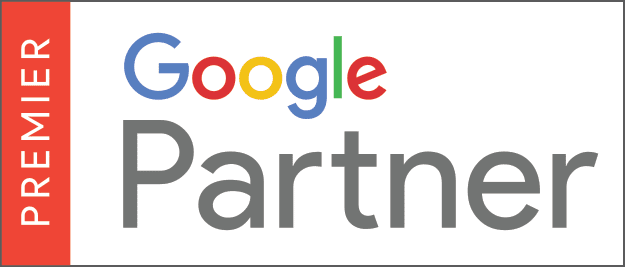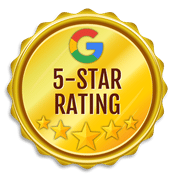- About
- What We Do
-
-
-
Marketing Services
-
-
-
-
-
-
-
THE LEADER IN HOME SERVICES MARKETING Let’s Talk
-
-
-
-
- Who We Work With
-
-
-
Industries
Partnering With Local Businesses In the Trades
-
-
-
-
-
-
-
THE LEADER IN HOME SERVICES MARKETING Let’s Talk
-
-
-
- Case Studies
- Blog
- Resources
- Contact

Digital Marketing FAQs

How to Calculate Customer Lifetime Value (CLV)
Depending on your industry, there are a number of ways to calculate Customer Lifetime Value (CLV). If you sell a monthly service, you could take your (average revenue per monthly per customer) X (gross margin) X (the average number of months a client stays with you). If you run a home service business (HVAC, plumbing, etc.), you might take your (average revenue per job) X (gross margin) and also take into account the number of times a customer uses you over a period of, say, 10 years and how likely they are to refer you to other people.
How do you calculate marketing ROI?
ROI stands for return on investment. If you Google "marketing ROI," you'll get a million different defintions. Which you use depends on your needs and business situation. The most simplistic version is to take the gross profit generated from a particular marketing investment, subtract the cost of the marketing campaign from it and divide this number by the cost of the marketing. ROI is typically expressed as a percentage, so multiple your answer by 100.
What is ROAS?
ROAS stands for return on ad spend. To calculate ROAS, you take the revenue generated from the advertising campaign and divide it by the cost of the advertising campaign. If you pend $10,000 on an ad and it generates $100,000 in business, your ROAS would be $10. ROAS can be a useful metric when you want to compare the performance of two different advertising channels.
What is website conversion rate?
Website conversion rate is a critically important metric used to measure and improve website performance. It is typically calculated by dividing the number of defined conversions by the number of visits to your website (expressed as a percentage). In some industries, and depending on what you're actually trying to measure/improve, it might be calculated using a segment of visits (vs. all visits). For example, a local plumber serving Colorado might have a 4% conversion rate when using all visits, but a 14% conversion rate when visits are segmented to only calculate the number using visits in Colorado--after all, can the local plumber really expect a visitor from China to convert? Not likely.
What is a conversion?
Web marketing people love to create new terms for things you thought you already understood! In the world of Internet marketing, the word "conversion" represents any action on your website that is more valuable than someone that visits your site and leaves without doing anything. What constitutes a conversion depends entirely on the industry and on the individual company. For most companies, it's a web form submission (aka. a lead). Other terms that are interchangeable with "conversion" include: goal, upper funnel action, lower funnel action, lead, action, and event (I'm sure there are dozens of others, but you get the point).
What is Bounce Rate and is it important?
One of the more commonly referenced website analytics terms is "bounce rate." What is bounce rate? What does it mean? Is it an important metric to monitor? Let's start with defining what a bounce is. A bounce occurs when someone visits your website, views a single page, and leaves. In this scenario a website tracking tool like Google Analytics, would report one bounce or a 100 percent bounce rate (depending on which type of report you run/view).
What is Dynamic Number Replacement (DNR)?
Dynamic Number Replacement (DNR) and Dynamic Number Insertion (DNI) are a call tracking technologies which allow advertisers to change the phone numbers on a given website based on parameters set by the advertiser.
What is content marketing?
When you create content with the intention of attracting and engaging prospective customers, you're engaged in content marketing! The content you create can be articles, blog posts, case studies, custom magazines, email newsletters, microsites, webinars, videos, and much, much more.
What is Google Hummingbird?
On September 26, 2013, Google announced that it had revamped and updated it's search algorithm, the formula it uses to sort through all the information on the web and return to you what it believes to be the most relevant and authoritative results. The nickname for the new update is Hummingbird, which is said to be because it allows Google to return results quickly and precisely.
What is Co-citation and Co-occurrence?
Co-citation and co-occurrence are an alternative to traditional link building for SEO. While definitions vary, co-citation happens when website A links to websites B and C. In this scenario, websites B and C are said to be related through co-citation because they both are linked from website A. Co-occurrence refers to the text before and after a hyperlink.
What is NAP and does it help SEO?
NAP stands for Name, Address, Phone Number. NAP is critical for businesses wishing to rank well in the local organic search results, because search engines like Google take the data into account when determining which companies to show for geo-targeted searches. What can businesses do with their NAP to boost their local search rankings?
Does linking to other websites help or hurt SEO?
There's a common belief that has spread through the SEO community faster than a cold in a nursery school that linking to another website will negatively impact your website's rankings and SEO. But is it true? Can linking to another website hurt your website's organic rankings? Is this always the case or are there times when linking to another website can actually improve your site's rankings?
Why XML Sitemaps are important for SEO
What is an XML Sitemap and why is having one important for SEO? Good question! Think of your website as a house and each page of your site as a room. You can think of an XML Sitemap like a blueprint for your house and each web page were a room, your XML Sitemap would be a blueprint—making it easy for Google, the proverbial home inspector of the web—to quickly and easily find all the rooms within your house. XML Sitemaps are important for SEO because they make it easier for Google to find your site's pages—this is important because Google ranks web PAGES not just websites.
What is duplicate content?
Just like it sounds, duplicate content happens when one web page has the same (or nearly the same) content as another web page.
What is Google Penguin?
When Google makes a major change to their algorithm, they often give it a name. In April 2012, Google made a major update to their organic search ranking algorithm dubbed "Penguin." The target of Google's Penguin update is... wait for it... webspam! The likely targets of the update - sites violating Google's Webmaster Quality Guidelines.
What is Google Panda?
Periodically, Google updates their organic search ranking algorithm. When they do, the updates are often given nicknames. On or around February 23, 2011, Google made a major update to their algorithm dubbed "Panda" by some and "Farmer" by others. According to Google, the update impacted roughly 12 percent of the organic search results, and the goal was to reduce webspam (low-quality sites ranked highly in the Google search results).
Which search engine gets the most traffic?
comScore (NASDQ: SCOR) tracks data relevant to the digital world. On June 13, 2012, they released their monthly comScore qSearch analysis of the U.S. search marketplace which shows which search engine gets the most traffic. As you migh expect, Google remains the big dog with close to 67 percent market share (which is up slightly from comScore's last report). Microsoft is in a distant second place with 15.4 percent and Yahoo! is falling behind with 13 percent. So, if you're optimizing your website or reviewing your search engine rankings, in most cases, you should focus primarily on Google, then Bing, and then Yahoo!
Does Google index .co domain names?
In the past, .co domains were used for the country of Columbia. Recently, domain registrars like GoDaddy have begun pushing them to webmasters and business owners from all countries as an alternative to .com. If you're wondering whether a .co domain will rank well on Google, the answer is, "yes." Major companies like Overstock.com have even started using .co in their traditional advertising and marketing (go to O.co as a shortcut to Overstock.com); however, .co domains don't seem to get the same weight that .com domains get, so if you're a small business you should definitely first try to get a .com address.
What are top-level domains?
Technical jargon aside, in the domain www.bluecorona.com, .com is the top-level domain (note: top-level domains are NOT case-sensitive). Created in 1998, The Internet Corporation for Assign Names and Numbers or ICANN, a nonprofit private organization in California, oversees a number of Internet-related tasks. One of these "tasks" is the management of top-level domains or TLDs. Recently, due to the growth of the web, there has been a big push to create new TLDs such as .google or .bluecorona. This proposed change could have a MAJOR impact on how businesses market and represent themselves online.
What are Backlinks?
When one website links to another website, it's called a link. Other terms commonly used by SEO companies and online marketers include: backlink, linkback, inbound link, incoming link, inlinks, and inward links. Links are important for SEO because search engines like Google use them as a gauge or measure of a website's relevance and authority.
How do I choose the right keywords?
Choosing the right keywords is a critically important aspect of an SEO campaign. Typically, it starts during the website audit process and continues through the duration of an ongoing SEO campaign. Unfortunately, not everyone thinks about your business the same way you do, so choosing the right keywords can be more difficult than you think! Blue Corona has developed a number of special, proprietary keyword research and selection tools that, combined with our experience, make intelligently choosing the best keywords much easier than any alternative method we've found (and we've analyzed A LOT of keyword research frameworks!).
How does Blue Corona track SEO success?
If you can't measure it, you can't manage it. You can't win the game if you don't know the score. Despite a million quotes which suggest that you can't maximize your business success unless you track your results, most business owners and marketers are still not accurately tracking their advertising, marketing, website, or SEO. Most online marketing companies treat tracking and reporting as an after thought - the last step. At Blue Corona, it's the first step in every SEO engagement.
How much does SEO cost?
One of the most common questions we get - particularly from small business owners - is, "what does SEO cost?" Blue Corona's SEO process starts with a website audit - an ongoing SEO campaign may or may not follow (ongoing SEO occurs approximately 85 percent of the time). Website audits are customized for individual businesses, so the prices vary, but the typical range is $2,500 - $3,500 (audits for larger "enterprise" websites can be considerably more). Ongoing SEO ranges from consulting to "do it for me" SEO services where Blue Corona's team acts like your own in-house SEO department (for a fraction of the cost of having your own SEO team). Ongoing SEO ranges from $1,000 per month on the low end to $10,000 (or more) per month on the high end.
How does SEO work?
SEO works by making it easier for search engines to find your website, and recognize your site as both relevant and authoritative (given the search query). One of the number one complaints business owners have about SEO, and SEO companies, is the lack of clarity with respect to what work is actually being done for the fees charged. Blue Corona has a proven SEO process that is both straightforward and transparent.
What Is SEO?
SEO stands for Search Engine Optimization. Broadly speaking, it is the process of making changes to your website's code, structure, content, and overall web presence to make it easier for search engines like Google, Yahoo, and Bing to find, read, index, and rank your website. There are thousands of techniques related to SEO, ranging from converting Flash and image files (which are currently difficult for search engines to read/interpret) to plain HTML files to creating reference content and encouraging other websites to link back to it.
What Is Google Fred?
If your rankings dropped in March, 2017, you’re not alone. In mid-March, the search community went abuzz with rumors of a new Google algorithm update aimed at black-hat SEO tactics. Named Google Fred, this update caused a huge shift in …
What is Google Medic?
The Google Medic update was a Google algorithm update in late 2018. While the update affected numerous industries, most of the webpages that were affected were Your Money, Your Life (YMYL) pages. WHAT ARE YMYL WEBSITES? Pages that can potentially …
Why are smaller companies outranking my website?
One of the most common questions we receive from larger enterprise organizations is "how are we being outranked by smaller companies?" Small businesses can rank higher in the organic search results on Google, Bing, and Yahoo for multiple reasons. While every situation is different, and it's impossible to say for certain without performing a comprehensive website audit and competitor analysis, some SEO roadblocks are common among enterprise organizations.
When to use multiple XML Sitemaps?
XML Sitemaps help search engines find, crawl, and index the pages on your website. There's no penalty for not having one, but creating an XML Sitemap is relatively simple and can be very beneficial for getting more of your website's pages ranked, so we highly recommend them. For small, relatively simple websites—those with only a few hundred pages—a single XML Sitemap is fine. However, sometimes a single XML Sitemap is not sufficient for large or complex websites
What is inbound marketing?
Inbound marketing refers to marketing strategies such as content marketing, pay per click (PPC) advertising, search engine optimization (SEO), and social media that attract or "pull" prospective clients/customers in at an exact moment of interest or intent. Inbound marketing strategies stand in sharp contrast to so-called "traditional" marketing strategies such as billboards, cold calling, direct mail, print, radio, tradeshows, TV, etc. that interrupt (often uninterested) people by pushing (typically unwanted) messages to them.
What is PPC?
The acronym "PPC" stands for "Pay Per Click," and it refers to Pay Per Click Advertising. Many people don't realize, but when you do a search on Google, what you're seeing on the results page is a mix of PPC ads and organic or natural listings. At present, the PPC ads are typically found at the top of the page and sometimes along the right hand side and bottom of the page (we say, "at present" because Google has been known to change the location of paid ads from time to time).
What does it mean to be mobile ready?
During a presentation at SMX East 2014, Gary Illyes, a webmaster trends analyst for Google, told an audience of agencies, business owners, marketers, and webmasters to stop using the term "smartphone" and instead use the word mobile. He also said that Google been telling us for four years to make our websites mobile-ready, but that has yet to happen. He defined mobile-ready as making sure your website's content and assets are accessible, legible, and usable to visitors across all devices.
What is a responsive website design?
A responsive web design automatically adjusts for different-sized screens and viewports. With a responsive website, someone can browse your website from any device and it will still look and function perfectly. A typical website is comprised of a set of files (each web page—home page, about page, etc.—is an individual file). Each file contains HTML code and content (text and images). Web pages are styled with files called Cascading Style Sheets (CSS). For ease of explanation, let's say that a standard (non-responsive) website has a set of files and a few CSS files that govern the look of the site. A responsive website applies an alternate set of CSS files depending on the device being used to access the site. The site looks and 'responds' differently based on the device
What is a mobile-first website?
In 2010, Google surfaced their mobile-first strategy, signaling a wider paradigm shift—consumer online content consumption switching from primarily desktop usage to mostly mobile usage. In 2016, Google began rolling out their mobile-first index, which looked at mobile versions of websites first, …
The information on this website is for informational purposes only; it is deemed accurate but not guaranteed. It does not constitute professional advice. All information is subject to change at any time without notice. Contact us for complete details.

Ready to increase your online presence today with digital marketing?










